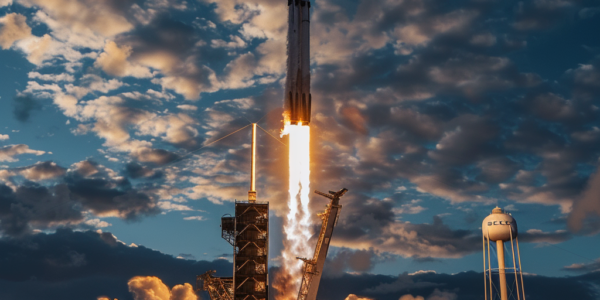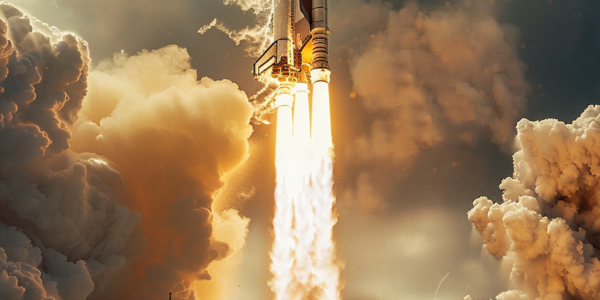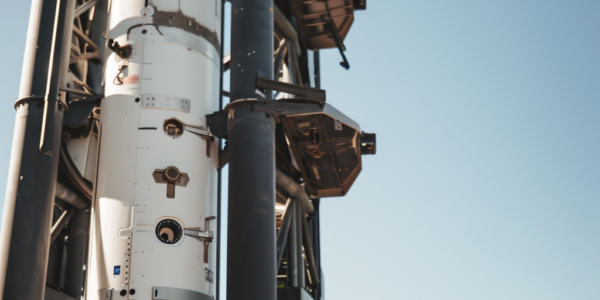SpaceX Successfully Launches New Batch of Starlink Satellites
SpaceX successfully launches 23 Starlink internet satellites into orbit from Florida’s Space Coast. This mission, known as Starlink 6-40, marks the 11th flight for the Falcon 9 first stage and is part of SpaceX’s ongoing effort to build a megaconstellation for global, high-speed internet access. The successful deployment of the Starlink satellites is a significant step forward for SpaceX as it continues to expand its presence in space and work towards its goal of providing worldwide internet coverage.
Packed Space Launch Schedule for March
This week’s space launch schedule is packed with four exciting flights, including the launch of Crew-8 to the International Space Station (ISS) from Florida, the Starlink 6-41 from Cape Canaveral, Transporter 10 from Vandenberg Space Force Base, and the debut of a new small satellite launcher from Japan. Crew-8, set to launch on March 3, will carry three NASA astronauts and one Roscosmos cosmonaut to the ISS for a six-month mission. The packed launch schedule promises an exciting start to the month of March, with multiple missions set to further humanity’s exploration of space and contribute to ongoing research and operations aboard the ISS.
SpaceX Launches Falcon 9 Rocket to Deploy 22 Starlink Satellites
A SpaceX launch illuminated the Southern California skies as the Falcon 9 rocket deployed 22 Starlink satellites to expand the company’s satellite network. The mission aims to provide internet service in remote locations, showcasing SpaceX’s commitment to sustainable space travel and global connectivity. The successful deployment underscores SpaceX’s dedication to revolutionizing space technology and advancing global connectivity.
Unseenlabs to Expand Maritime Surveillance Constellation with Launch of 12th and 13th Nanosatellites
French maritime surveillance provider Unseenlabs is expanding its satellite constellation with the launch of its 12th and 13th nanosatellites, bringing the company halfway towards its goal of offering near-real-time maritime surveillance services by the end of 2025. The new satellites, BRO-12 and BRO-13, are set to be integrated and launched on a Falcon 9 from Vandenberg Space Force Base in California. Unseenlabs’ current network of 11 satellites can monitor and track signals from ships across the world’s oceans every four to six hours, providing valuable data for commercial and government customers. The company plans to launch a total of six satellites in 2024, with a proposed constellation of 25 satellites by 2025, enabling a revisit time of around 30 minutes over the same area to enhance its services for real-time environmental monitoring, rapid response to maritime disasters, and live tracking of pollutant emissions.
NASA and SpaceX Delay Crew-8 Mission to Avoid Conflict with IM-1 Lunar Lander Launch
NASA and SpaceX have announced a delay in the launch of the four-person Dragon Crew-8 mission to the International Space Station (ISS) from February 22 to no earlier than February 28 to avoid potential conflict with the launch of Intuitive Machines’ IM-1 lunar lander mission. The Crew-8 Dragon Endeavour launch date will be reassessed following a successful launch of the IM-1 lunar lander, and it could be subject to further changes. This delay is part of ongoing efforts to ensure the safety and success of space missions amidst increasing interest and activity in space exploration.
Jeff Koons: Moon Phases Project Sends 125 Sculptures to the Moon
Artist Jeff Koons is set to send 125 sculptures to the moon on a rocket developed by Elon Musk’s SpaceX. Each one-inch miniature Moon sculpture represents a phase of the Moon and is associated with significant historical figures. The launch, initially scheduled for February 14th, has been rescheduled for February 15th due to technical issues.
Polaris Dawn private astronaut mission delayed to at least mid-2024
The Polaris Dawn private astronaut mission, backed by billionaire Jared Isaacman, has been delayed to at least the middle of 2024. The delay is due to the need for additional developmental time to ensure the completion of mission goals and a safe launch and return of Dragon and the crew. One of the key mission goals is to conduct a spacewalk, marking the first from a Crew Dragon spacecraft, requiring the development of an extravehicular activity (EVA) spacesuit and modifications to the Crew Dragon. Billionaire Jared Isaacman acknowledged the challenges, stating that the work was more difficult than expected, contributing to the delays. The Polaris Dawn mission serves as a testing ground for the suit that SpaceX plans to use for future missions, making it a significant milestone for the company.
SpaceX Testing Groundbreaking System to Tackle Communication Blackout During Spacecraft Re-Entry
SpaceX is set to trial a groundbreaking system using Starlink satellites to revolutionize re-entry communications for spacecraft. The innovative approach aims to address the persistent challenge of communication blackout caused by the plasma sheath during re-entry, potentially ensuring continuous connectivity for astronauts and mission control.
Hawaiian Airlines introduces high-speed Starlink internet service on select flights
Hawaiian Airlines has unveiled its new high-speed Starlink internet service, making it the world’s first major carrier to deploy this advanced technology on select flights. Passengers can now enjoy seamless connectivity comparable to their home internet experience, marking a significant milestone in the aviation industry. The integration of Starlink’s technology with the airline’s renowned hospitality will offer a seamless and complimentary Wi-Fi service to guests, eliminating the hassle of registration and payment processes. The implementation of Starlink’s technology represents a significant advancement in in-flight connectivity, enabling passengers to enjoy uninterrupted access to high-speed, low-latency broadband internet while traversing the vast expanse of the Pacific Ocean.
NASA Launches PACE Mission to Study Earth’s Microscopic Marine Life and Atmospheric Particles
NASA has launched the PACE mission to observe Earth’s microscopic marine life and atmospheric particles, aiming to provide unprecedented insights into how oceanic and atmospheric processes shape the planet. Equipped with three instruments, the mission will shed light on indicators for ocean health and global warming. PACE has the potential to continue orbiting and studying Earth for up to 10 years, joining a fleet of NASA Earth science missions to gather data on climate change.










